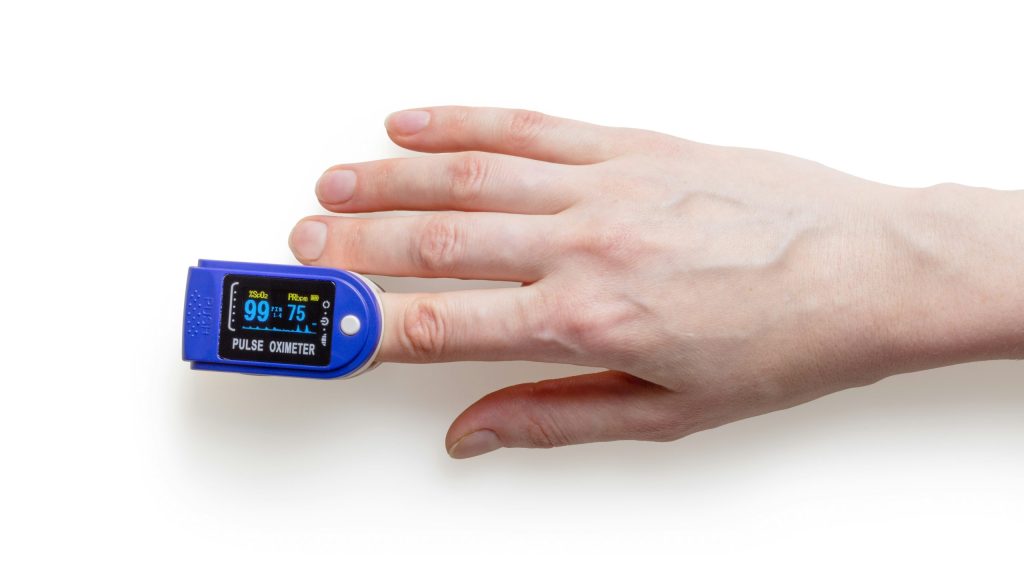Altitude Sickness on the Annapurna Circuit Trek

The Annapurna Circuit trek has always been a well-known and inspiring trek among trekkers. If you are thinking of doing a trek, this is the finest place to trek, where the beauty of nature will accompany you.
The trail passes through varied landscapes, wildlife, local lifestyles, nature, and weather in the Annapurna region. To explore, you will even lose track of time. You will be able to witness this serenity with your own eyes.
The route is full of enthusiasm, giving you full experiences of your journey in every aspect. This classic trial of Annapurna Circuit could be your life-changing experience, too. You might be in a dilemma on how fit you should be or how to deal with altitude sickness along the trek. Here, in this blog, we go through the details of altitude sickness and its relation to the Annapurna Circuit Trek.
Table of Contents
What is Altitude Sickness?
Altitude sickness is a physical condition when your body’s organs aren’t able to handle or adjust to lower oxygen present in high elevation. This sickness usually gets better within a day with enough rest, but it can be life-threatening in case of negligence. Even though you are healthy, altitude sickness does not mean you won’t be affected. That is why you have to be prepared for these outcomes.
If you ascend too high quickly, there are higher chances of getting altitude sickness. For this reason, you should know how to adapt your body to frosty mountains. The altitude of mountain ranges is not merciful to anyone. Even trekkers are not able to pin down who will get this sickness.
The fact is that the more you inhale the chilly wind, the more difficult it gets. Therefore, you should be in control of your respiratory system. However, expert trekkers wouldn’t be helpful if you don’t help yourself.
Causes of Altitude Sickness
Acute mountain sickness is caused by gaining altitude speedily, but it might be caused when you can’t embrace your body to cold regions or due to low oxygen levels. The chances of getting altitude sickness rise from 2500 meters above sea level, but only a few people show symptoms in the lowlands. So here are some causes of altitude sickness in the Annapurna Circuit Trek that you need to know:
a. Gaining Altitude Rapidly
The maximum altitudes during the Annapurna circuit trek reach 5,416 meters while crossing Thorong La Pass. That means the air will be thinner and dry at this height, making it difficult to breathe. At this height, if you move rapidly, it can lead to life-threatening issues. So, you must move slower and adapt to the increasing altitude.
So you should give yourself enough time to adjust your body. This could come from severe cases, like fluids building up in the lungs and brain. In most cases, some trekkers show signs as soon as they are exposed to high altitudes. Certainly, the Annapurna region is an asylum in both ways; it is like walking towards heaven, but you have to be careful, or it could be the land of Hades.
In addition, you will be trekking 12 days or a week to reach that height, which is a lot to ask for, but the higher the risk, the greater the success.
b. Changes in Weather
Climate change is another source of altitude sickness. If you are planning to trek in the winter season, there is a higher possibility of being affected by the coldness of the Annapurna region. Nights are usually freezing, so only lower regions are warmer.
One day, you can enjoy the sun’s warmth, but instantly, you will be able to witness the coldness of Annapurna. Your body wouldn’t react or act as you want in these merciless circumstances.
In this situation, you only hope your proper guide prevents incident altitude sickness.
c. Low Oxygen Level

Many trekkers fall into the death trap since the Annapurna circuit trek takes place at a high altitude. Normally, an oxygen cylinder is not required during the trek, but do not underestimate the elevation of the Annapurna circuit.
At high elevations, our bodies might be unable to adapt to the thinner and dry air. During these times, you can have trouble breathing because of extreme cold. Many effects of dry air show shortness of breath, exhaustion, headache, etc. Remember to cover your face with a thick neck scarf.
Symptoms of Altitudes Sickness
The symptoms of acute mountain sickness usually appear within the very first day but every person doesn’t show the same symptoms. Trekkers should not neglect those symptoms whenever the sign of altitude sickness shows. So here are some of the highlight symptoms of altitude sickness:
- Headache
- Nausea and vomiting
- Loss of appetite
- Fatigue
- Losing consciousness
- Trouble in sleeping
- Dizziness/lightheadedness
- Shortness of breath
- Rising pulse rate
- Mouth gets dry
- Vision blur out
If symptoms get worse, you should seek medical attention immediately.
How to prevent Altitude Sickness
Ascending slowly is the prime suggestion to prevent altitude sickness. Trekking at higher altitudes makes adopting a body with low oxygen levels difficult. Once you reach over 3000 meters, you should rest and keep hydrating your body.
Normal treatment can be helpful if the altitude sickness is not too severe. Here are some of the prevention of Altitudes Sickness:
- Walking slowly even takes 1 hour for others, and you take 2 more hours to reach your destination. Don’t be hasty while walking in the Annapurna Circuit. Be careful. The faster you walk, the more trouble you have breathing.
- Avoid intake of alcohol because most people take alcohol to increase body temperature. Yes, it does increase body temperature, but it increases the chance of getting altitude sickness.
- Hydrating your body is an important way to prevent altitude sickness. Drink plenty of water during your trek, but don’t drink when you are out of breath. Take your time to rest then have your drink in small portions.
- Never unface in freezing cold; always cover your nose and mouth. It gets even more difficult to breathe and walk the mountain if you uncover your face.
- If possible, try to sleep at a lower altitude.
- Never go directly to a heat wave like a fire heater. Firstly let your body relax and warm your body and have plenty of warm water to raise your body temperature. It might have side effects on your body.
- Always trek in a group, so if you are unable to walk or breathe, inform them immediately.
Risks of Altitude Sickness in the Annapurna Circuit Trek
Naturally, yes, there are enormous risks in trekking to the Annapurna Circuit trail. As a matter of fact, if you are trekking with hefty bags in giant mountains, the possibility is that it makes you move even slower. So, make your bag packs as light as possible to make your trek smooth and lower the chances of getting altitude sickness.
Since you are risking your life, the Annapurna Circuit trek might be your life-changing resolution. You will be able to learn about culture and how local people live there in tall mountains.
Many trekkers have taken lots of risks, yet they enjoyed their journey. The Annapurna Circuit trek might be thrilling. Yes, the Annapurna circuit trek is worrisome despite the risk of altitude sickness. So, remember to keep body your hydrated and get plenty of rest.
Conclusion
The Annapurna Circuit’s stunning mountain views come with the risk of altitude sickness, which should never be ignored. Paying attention to one’s health is key as the elevation gains. Slow ascents and proper acclimatization give the body time to adjust, making summiting Thorong La pass safely achievable.
While we prioritize fitness levels before booking this trek, travelers also must heed warning signs should they arise. Do not wait if symptoms progress. High Route Adventure prioritizes health over heroics, always ready to support early descent if needed.
Caution and realistic expectations make the Annapurna Circuit an epic trek that avoids preventable evacuation. With the right preparation, its dazzling Himalayan reward outweighs the struggle for most who set out.
Stay alert and walk slowly up high, returning home with breathtaking photos rather than medical transport. Our teams help ensure this outcome in a trek of a lifetime done the right way.
Posted on








